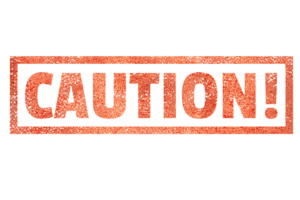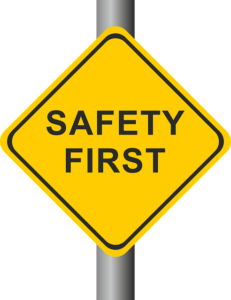Situational Awareness is Your Key to a Safe Mission!
Situational awareness is the core of a safe and successful mission and ensures that potential hazards are eliminated before they become a danger to individual safety, success, and reputation.
No matter who you are, what you do, or where you work, situational awareness must be cultivated to create safe environments!
What is Situational Awareness?
Situational awareness (SA) in its simplest form is knowing what is going on around you and creating clarity.
Safety is crucial to any mission as it ensures that the task is executed at a high level of quality and is successful!
The four elements of situational awareness are:
- The extraction of information from the surrounding environment.
- Mixing this information with internal knowledge to create a mental picture of the situation.
- Using the mental picture to explore the situation further.
- Utilising the mental picture, knowledge, and skills, to anticipate future events.
By individuals, teams, and companies, integrating the four elements of SA into everyday practices, ensures that the level of safety is high, as people are actively aware of what is going on. A high level of safety prevents hazards, both large and small, from becoming active issues that could bring potential harm to many aspects of your company.
Safety is a by-product of Professionalism
Professionalism is not the job that you do, it is how you do the job! And it starts at the top!
A leader that exhibits professionalism, is a leader that values safety.
Professionalism ensures quality, thoroughness, and competence. These are qualities that are crucial to situational awareness and safety.
Threats of Situational Awareness – Are They Undermining Your Safety?

If the key to a safe operation is situational awareness, then we must protect it at all costs! Any disruption to SA is a threat to your safety. Some common threats of SA are the distraction of non-essential activities, fatigue, repetitive jobs, and shock.
Distraction can be deadly! By this I don’t mean multitasking, as fighter pilots and high performers are trained to multitask effectively, I am however referring to the small or large, non-essential tasks that drain SA and compromise safety.
Managing distractions ensures that your attention is largely focused on reading the situation, applying your knowledge, and creating solutions. Limiting your distractions ensures your utmost safety!
Fatigue is critical to situational awareness, as SA requires active thinking, thorough assessing, and fast-paced problem-solving. Research has shown that fatigue has a significant impact on mental engagement and performance. To manage fatigue, you must ensure that you get adequate sleep, actively manage stress, and schedule time for physical rest!
Surprisingly, or not so, repetitive tasks are a major threat to safety! Tasks that are routine and monotonous compromise individual safety as the executor is more likely to go into an ‘autopilot’ state, become further removed from their job, and lose their SA of potential or occurring hazards.
The last, but possibly most dangerous threat to safety, is shock. Any events that cause shock (e.g., explosion, distressing news, or major injury), create a fight, flight, or freeze response in our bodies. Managing this response is pivotal to maintaining situational awareness to ensure the safe execution or completion of the task.
Developing Situational Awareness – Your Key to Safety!

It is imperative that you are always developing your situational awareness. This ensures that your safety and that of your teams is always at its peak! There are three main ways that we suggest you develop your SA. These are accepting mutual support, taking advantage of your Red Teams, and debriefing!
Accepting mutual support is relying heavily on the skills, strengths, knowledge, and input that your team has to offer! Tapping into other people’s skillsets and knowledge allows you to gain different perspectives to ensure you have all the information needed to complete the mission successfully!
A Red Team is a group of people that review your plan to ensure there are no loopholes or blind spots, that could result in a failed mission. The feedback from the Red Team ensures you have SA on what could go wrong and are able to cope with unexpected events effectively and ensure success.
Debriefing provides objective feedback that allows you to recognise your and your team's SA downfalls. By reviewing what went wrong during the mission, it allows you to plan better for future missions, perform more effectively and increase your situational awareness.
Situational awareness is your key to a safe and successful mission. Use it always! Develop it continuously! Win your missions safely!
Safety in Situational Awareness References –
Irwin, A., & Hamlet, O. (2018, May 23). How situation awareness could save your life. The Conversation. https://theconversation.com/how-situation-awareness-could-save-your-life-96032
Mind Tools. (n.d.). Professionalism: Meeting the standards that matter. Mind Tools. https://www.mindtools.com/pages/article/professionalism.htm
Nunez, K. (2020). Fight, flight, freeze: What this response means. Healthline. https://www.healthline.com/health/mental-health/fight-flight-freeze
Situational Awareness Matters. (n.d.). Tired Brains and Situational Awareness. Situational Awareness Matters. https://www.samatters.com/tired-brains-and-situational-awareness/
Skybrary. (2020). Situational Awareness. Skybrary. https://www.skybrary.aero/index.php/Situational_Awareness#cite_note-2


